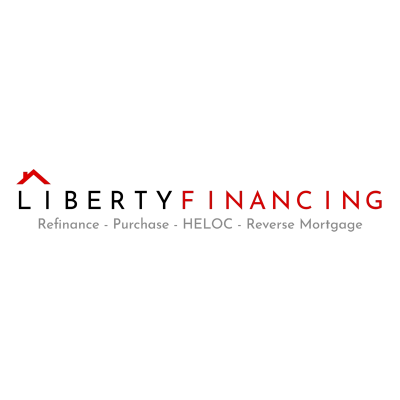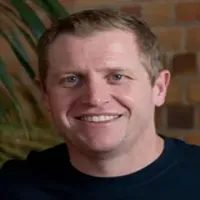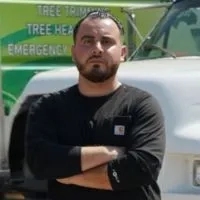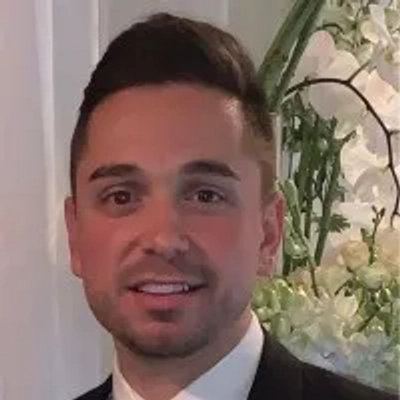14 Questions to Gain Deeper Understanding of Client Needs
Discover the key questions that unveil the true needs and goals of your clients. This article delves into expert insights on addressing client challenges effectively. Learn how to prioritize and articulate client priorities to achieve long-term success.
- Uncover Root Causes Of Problems
- Solve Real Client Challenges
- Craft A Compelling Public Image
- Prioritize Client Needs And Goals
- Articulate Client Priorities Clearly
- Address Workflow Pain Points
- Achieve Real Long-Term Goals
- Reveal Deeper Leadership Obstacles
- Encourage Detailed Customer Feedback
- Understand Long-Term Landscape Vision
- Align Strategies With Core Objectives
- Address Urgent Client Needs First
- Replicate Feelings Of Client Fulfillment
- Design Functional And Beautiful Spaces
Uncover Root Causes Of Problems
One question I often ask clients is, "What's the biggest challenge keeping you from achieving your next level of success?" This question goes beyond surface-level needs and gets to the core of what's truly holding them back. Their answer helps me uncover underlying issues—whether it's leadership gaps, misaligned messaging, or operational inefficiencies. It also reveals their mindset, priorities, and willingness to change. From there, I tailor my approach to address not just the symptoms but the root causes, ensuring a strategy that aligns with their vision and produces lasting results. By focusing on their unique roadblocks, I can help them unlock new opportunities and accelerate growth effectively.

Solve Real Client Challenges
One question I always ask clients is: "What's the biggest bottleneck preventing you from reaching your next milestone?"
This question goes beyond surface-level needs and gets to the heart of their real challenges. Sometimes, clients come to us thinking they need a specific solution--better automation, improved workflows, or a new tool--but when we dig deeper, we often find that the real issue is something else entirely.
For example, one client approached us looking for a way to streamline customer follow-ups. But after discussing their bottlenecks, we discovered that their biggest challenge wasn't automation--it was low engagement due to unclear messaging. Instead of just implementing a system to follow up faster, we worked with them to refine their customer communication strategy, which had a much bigger impact on conversions.
By consistently asking this question, we ensure that we're solving the real problem, not just the perceived one. It helps us align our solutions with their actual pain points, making our work more effective and driving real results for our clients.
Craft A Compelling Public Image
One question I ask clients regularly to better understand their needs and goals is: "What is the one message or story you want the world to know about you?"
The answer to this question provides invaluable insight into the essence of their personal brand. It helps me grasp their core values, vision, and the unique qualities they want to showcase to their audience. For example, if a client wants to highlight their entrepreneurial journey or expertise in a specific field, it enables me to tailor media placements, podcast interviews, and TV appearances that align with that narrative.
This understanding drives the entire strategy at Level Up PR. By focusing on the client's desired message, we can craft a compelling public image that resonates with the right audience, amplifies credibility, and opens doors for new opportunities. Whether it's securing features in top-tier publications or curating high-impact speaking engagements, this question ensures that our efforts are aligned with their long-term goals, ultimately positioning them as industry leaders and influencers.

Prioritize Client Needs And Goals
One question that I always ask clients is 'What does success look like for you in the next 6 to 12 months?' Asking this question allows me to understand what the client is hoping to achieve and what their top priorities are! Whether it's growth, profitability, or something else, I can gain a much better understanding of the client before proceeding forward.
The answer gives me a clearer idea of how to adjust my strategy to fit their needs. Instead of going with a one-size-fits-all plan, I focus on what's most important to them and tailor everything accordingly. This helps ensure we're all working toward the same goal and can track real progress!

Articulate Client Priorities Clearly
One question I always ask clients is: 'What does success look like for you in the next 12 months?' It sounds simple, but the answers are always revealing. Some clients focus on revenue targets, others on landing a specific type of client, and some are looking for stability rather than aggressive growth. This question gets them thinking beyond vague aspirations and forces them to articulate their priorities in a clear, measurable way. It also helps uncover any underlying challenges they might not have mentioned yet like a leadership change, a brand repositioning, or a previous bad experience with new business efforts. Their response shapes everything we do. If a client is chasing high-profile brand wins, we'll focus on positioning them for big pitches. If they need a steady stream of mid-sized clients, we'll look at more consistent outreach and relationship-building. And if they are in a transition phase, we'll work on refining their messaging and targeting before diving into full-scale lead generation. This question is a great way to cut through the noise and get to the heart of what really matters to them.
Address Workflow Pain Points
One question I always ask clients is, "What is the biggest challenge you face in your daily workflow?" This question gets right to the heart of their pain points and gives real insight into where inefficiencies exist.
The answer informs my approach by helping me understand not just the surface-level issues but the deeper frustrations that impact productivity, patient care, and overall job satisfaction. For example, if a healthcare professional says their biggest challenge is spending too much time on documentation, that signals a need for AI-driven automation tools like those in Carepatron. If they struggle with scheduling inefficiencies, it points to the need for smarter appointment management systems.
By focusing on their biggest challenge rather than assuming what they need, I can tailor solutions that genuinely make their work easier. It ensures AI and automation are used in a way that supports them rather than adding more complexity.

Achieve Real Long-Term Goals
Question: "If we solved this problem perfectly, what would success look like for you?"
Most clients come with a surface-level request--"We need more leads," "We want better engagement," or "We need a new website." But what they really want is usually something deeper: More qualified leads? A stronger brand presence? A website that converts instead of just looking pretty?
By asking this question, I get them to paint a picture of success in their own words. It helps me see:
-What truly matters to them (Is it revenue, brand perception, efficiency?)
-How they measure success (Is it sales, engagement, or something else?)
-What hidden challenges they haven't mentioned yet
This answer completely changes my approach. Instead of just delivering a service, I tailor the strategy to achieve their real, long-term goals--often ones they didn't even articulate before. It turns a transaction into a transformation.

Reveal Deeper Leadership Obstacles
One question I regularly ask clients is: 'If you could solve one leadership challenge today, what would it be, and what's holding you back?' This question reveals not just their surface-level concerns, but also deeper obstacles—whether it's mindset, team dynamics, or strategic roadblocks. Their answer helps me tailor my coaching approach, focusing on high-impact solutions that drive real transformation while aligning with their leadership vision.

Encourage Detailed Customer Feedback
One effective survey question I've implemented is:
'How well do our services meet your needs? Please provide specific examples or suggestions.'
This question not only prompts customers to evaluate our offerings in relation to their expectations but also encourages them to share concrete experiences. By requesting specific examples, we gain insights into what is working well and what may warrant further development.
This approach not only aids us in identifying and addressing potential issues but also reinforces the notion that we value detailed feedback. Customers appreciate when their insights can lead to tangible improvements, creating a collaborative atmosphere that enhances their overall engagement with our platform.

Understand Long-Term Landscape Vision
One key question I always ask clients is, "What is your long-term vision for your trees and landscape?" This helps me understand whether they want low-maintenance trees, a lush canopy for shade, or simply need immediate hazard removal. For example, I once worked with a homeowner who initially called for a simple tree trimming but, after discussing their vision, revealed they wanted their backyard to become a shaded retreat for their kids. Because of my years of experience and arborist certification, I knew that trimming alone wouldn't achieve their goal. Instead, I recommended a combination of selective pruning, deep root fertilization, and strategic planting of additional shade trees. A few years later, that backyard became exactly what they envisioned, a beautiful, shaded space for their family.
My qualifications as a TRAQ certified arborist allowed me to assess tree health and risks properly, ensuring we didn't remove branches that would later compromise stability. My background in the industry since childhood also gave me the expertise to recommend tree species that would thrive in their specific soil and climate. Without that initial question, they might have only gotten a short-term solution instead of a landscape that meets their long-term goals. By taking the time to understand their needs beyond the immediate request, I was able to create a plan that provided safety, beauty, and longevity. This approach has been key to building strong client relationships and delivering exceptional results.

Align Strategies With Core Objectives
One of the most important questions we ask our clients is:
"What's the biggest challenge or goal you want us to solve, and how do you prefer we keep you informed throughout the process?"
This question ensures we align our strategies with their core business objectives while adapting to their communication style.
For example, a fashion retailer may want higher conversions, while a SaaS company may prioritize lead generation. By identifying their true goal, we can customize solutions--whether it's PPC optimization, SEO-driven content, or CRO strategies.
The second part--"How do you prefer we keep you informed?"--helps us tailor our communication. Some clients prefer detailed reports and meetings, while others want high-level insights with key takeaways. This approach builds trust and keeps them engaged in the strategy.
By focusing on business impact and transparent communication, we ensure that our marketing efforts drive measurable growth while fostering long-term partnerships.

Address Urgent Client Needs First
I usually ask clients, "What is your biggest challenge right now?" This helps me understand their most urgent needs. By focusing on solving that problem first, I can provide a solution that directly addresses their goals. It also ensures we're on the right track for future success.

Replicate Feelings Of Client Fulfillment
One question I often find invaluable when working with clients is: "Can you describe a project or endeavor where you felt the most fulfilled?" This query not only reveals what they value in their work but also highlights their strengths and preferred working style. Understanding what fulfillment looks like to someone helps gauge the alignment between their goals and the potential outcomes of our collaboration.
The response to this question informs my approach by showing me where to allocate resources and focus in order to replicate those feelings of fulfillment and productivity. For instance, if a client felt most fulfilled in a collaborative team environment, I might suggest a structure that leverages teamwork. Essentially, by knowing what makes clients feel accomplished and motivated, I can tailor strategies and solutions that resonate more deeply with their aspirations, ensuring a productive and satisfying partnership.

Design Functional And Beautiful Spaces
One question I always ask clients is, "How do you want to use your outdoor space?" This simple but powerful question helps me understand whether they're looking for a low-maintenance garden, a lush and vibrant entertaining area, a kid-friendly backyard, or even a productive vegetable patch. Their answer gives me insight into their lifestyle, priorities, and the level of care they're willing to put into their garden. From there, I can tailor my approach, selecting plants that thrive in their specific conditions, recommending the right lawn type, and designing practical yet beautiful spaces that suit their needs. My years of experience and qualifications in horticulture allow me to not only visualize the perfect outcome but also implement it in a way that ensures long-term success, considering soil health, drainage, plant selection, and ongoing maintenance needs.
A great example of this in action was when a client told me they wanted their backyard to be both a peaceful retreat and a space for entertaining guests. With over 15 years in the industry, I knew exactly how to strike that balance. I designed a layout that incorporated low-maintenance, fragrant plants like lavender and jasmine near their seating area to create a relaxing atmosphere. I also installed a hardy, drought-tolerant lawn that could withstand foot traffic during gatherings. By integrating layers of greenery with feature lighting and strategically placed garden beds, we transformed their space into an inviting oasis. The client was thrilled, and because I factored in sustainable and easy-care solutions, their garden remains beautiful with minimal effort. This outcome wouldn't have been possible without the combination of my hands-on experience and advanced horticultural knowledge, which ensures that every project I take on is both functional and aesthetically stunning.




